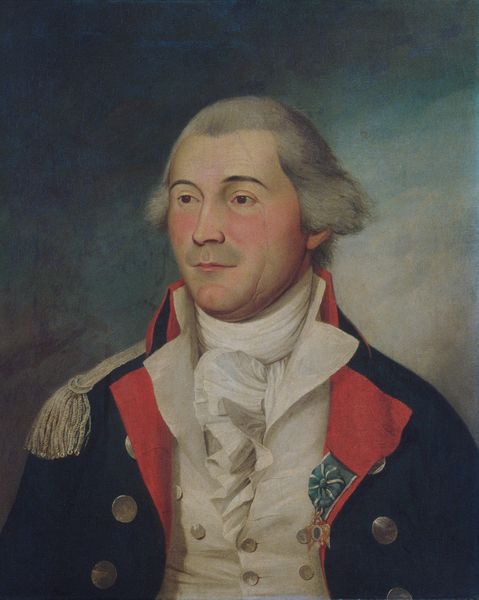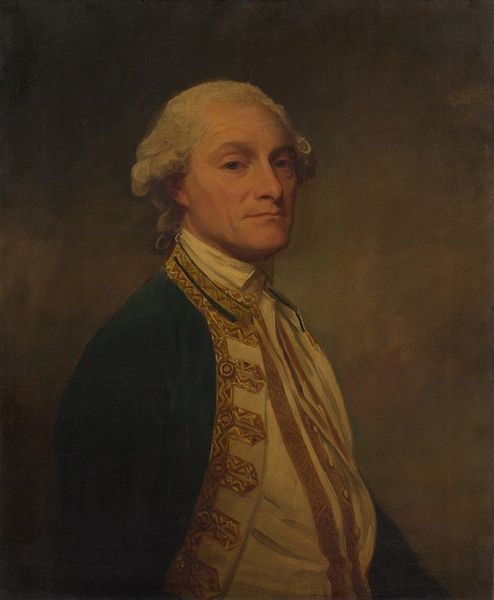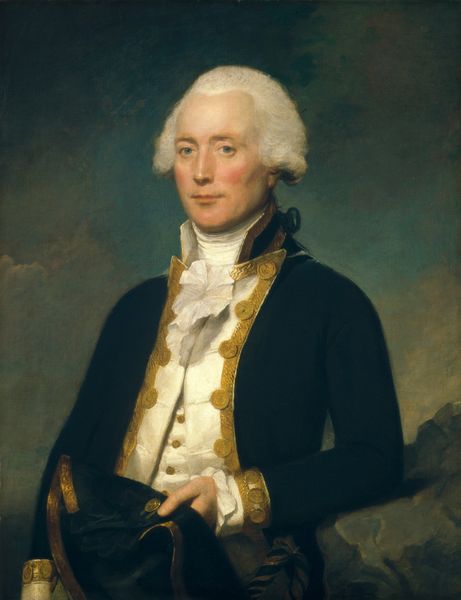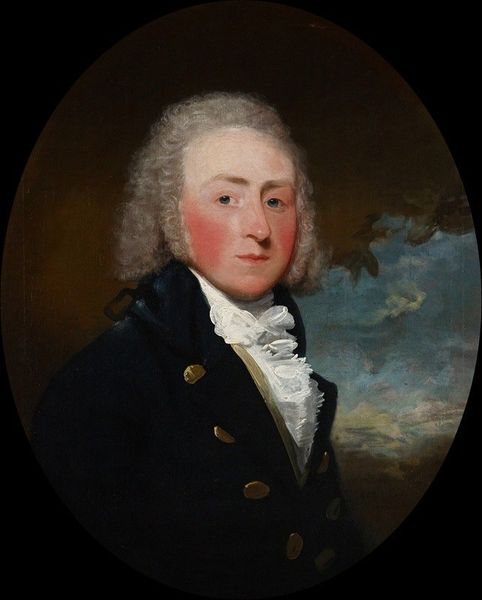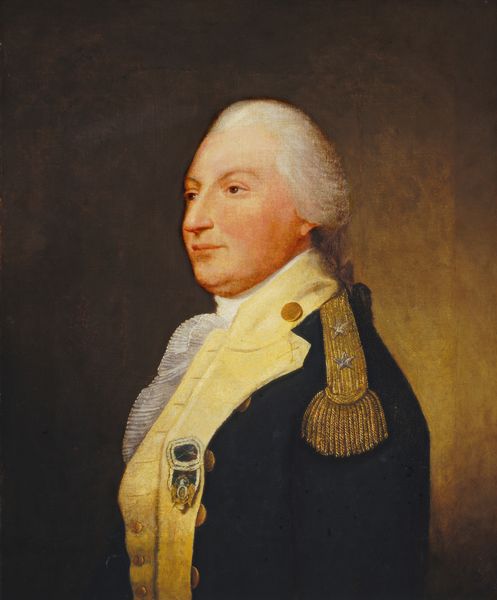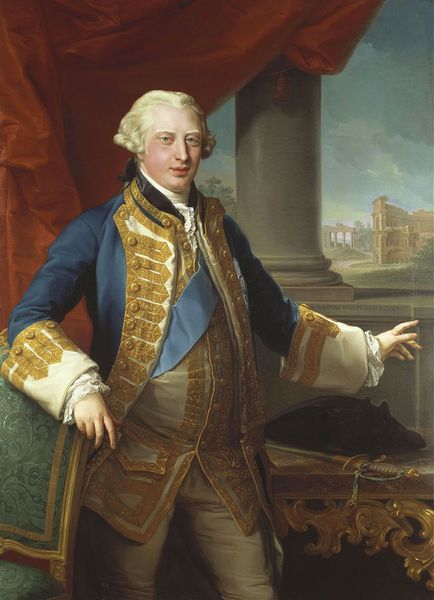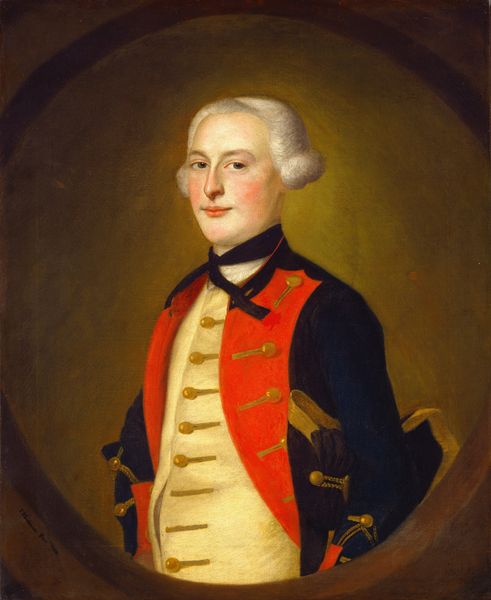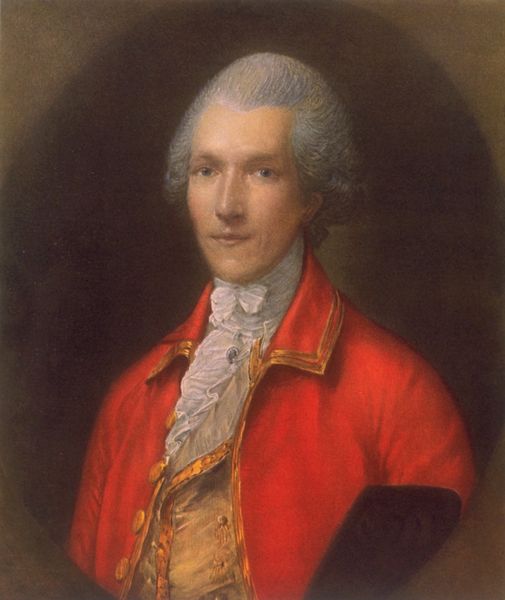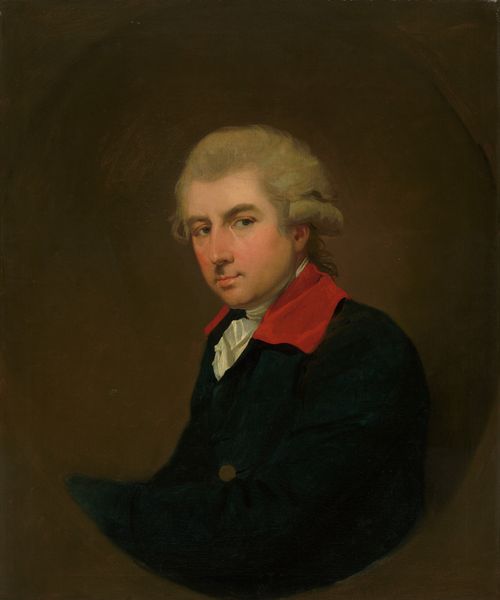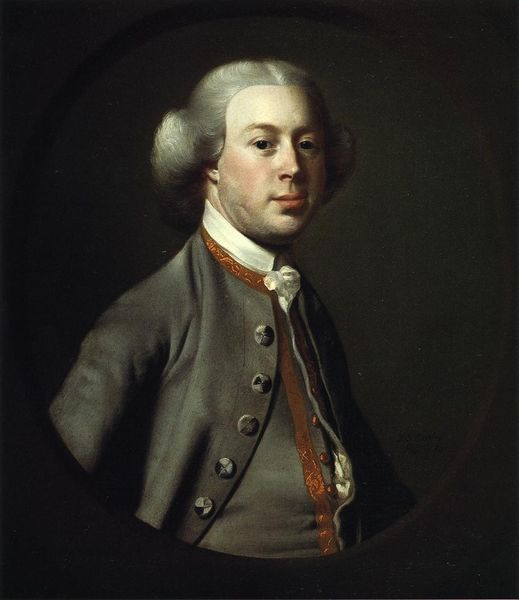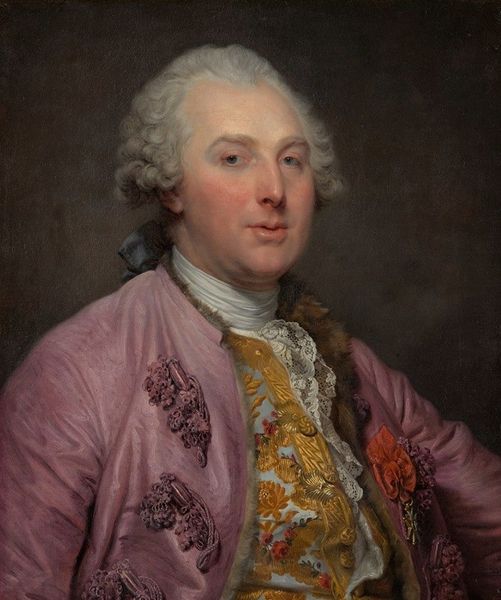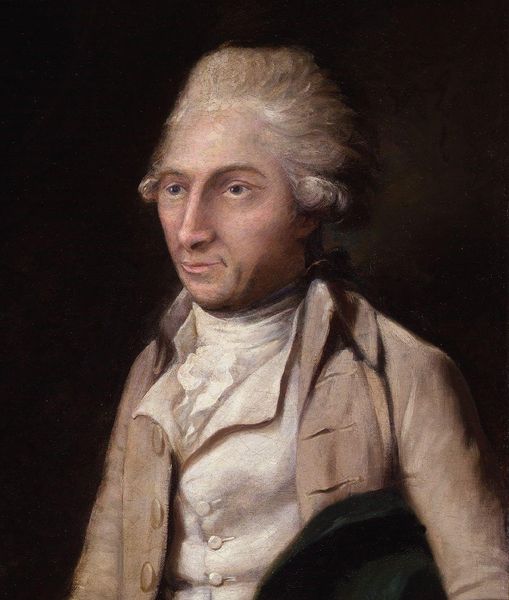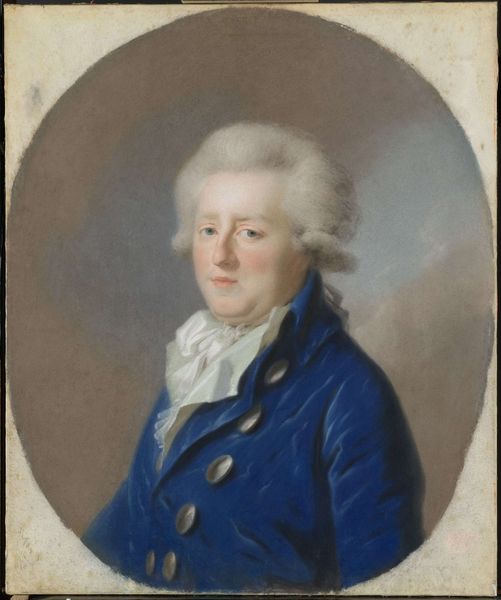
Dimensions: overall: 76.4 x 63.5 cm (30 1/16 x 25 in.) framed: 94.3 x 81.9 x 7.6 cm (37 1/8 x 32 1/4 x 3 in.)
Copyright: National Gallery of Art: CC0 1.0
Curator: Let’s discuss this striking portrait attributed to George Romney, dating back to about 1780-1790, titled "Mr. Forbes." It's a powerful representation in oil paint of a gentleman from that era. Editor: My first impression is one of constrained power. The muted colors and rather formal composition, all held together with precise execution, make it read like a study in restrained authority. Curator: Indeed. The rigid pose and the subject’s reserved expression must be seen within the context of the late 18th century. Think of the shifting socio-political landscape and the need for figures of authority to project a sense of controlled stability, and his direct gaze as an assertion of that power. Editor: I’m fascinated by the technical execution. Look at the subtle gradations of color in his face, and how the artist captures the texture of the fabrics, creating a contrast between the smooth skin and the rougher materials. The light feels very controlled and directional. Curator: Precisely, the materiality of clothing is deeply ingrained in representations of class and status, so close attention must be paid to his dress as a construction of persona. The flamboyant frills contrast against the black outer coat in a manner befitting the academic portrait tradition that upheld very strict aesthetic and symbolic regimes. Editor: I agree that the artist wants to signal social status, but is there not also an element of idealization? The pose and costume seem carefully constructed for posterity, suggesting the timeless values the subject seeks to embody. Curator: Certainly. Mr. Forbes exists within multiple systems, and the intersectional discourse on power and class at the time would have understood portraiture as being at a crux of identity, social position, aspiration, and self-image. He’s performing a role, just as Romney is fulfilling his duty in depicting the role being performed. Editor: That tension is key, I think, and Romney brilliantly understood this. This painting beautifully presents that dichotomy: the outer confidence, expertly created with lines and colors, against the possible realities of the subject. Curator: I see him caught between an establishment and a coming wave of upheaval that he surely wouldn't survive unchanged. Thanks for making me think it over! Editor: The pleasure was all mine. A painting, in its frozen form, preserves more information and emotion than many realize.
Comments
No comments
Be the first to comment and join the conversation on the ultimate creative platform.
